Introduction
Over the last decade, outbound sales has changed dramatically. Once upon a time, success came from volume: blast out enough cold emails, dial enough numbers, and eventually you’d land a few meetings.
For companies with large total addressable markets (TAMs) and relatively straightforward deals, this approach worked.
But markets evolve.
Buyers are inundated with outreach. Procurement processes have become more complex.
Budgets are scrutinised by committees, not individuals.
For sellers in industries like HR technology, FinTech, compliance, and cybersecurity-where deal sizes are high and stakes are significant-the traditional playbook isn’t enough.
That’s where Account-Based Selling (ABS) comes in.
ABS shifts the focus from chasing as many leads as possible to focusing deeply on the right accounts, tailoring every interaction to the unique context of each business.
Done well, it’s not just personalised-it’s relevant, strategic, and built on a foundation of insight.
This article explores:
- When to use Account-Based Selling
- The formula I’ve developed for effective ABS
- How to create targeted account plans and account assets
- The channels that bring ABS to life
- The benefits and challenges of this approach
- Action items you need to consider before adopting ABS
- Why ABS is the future of predictable, high-value pipeline growth
When Should You Use Account-Based Selling?
Account-Based Selling is a powerful approach, but it isn’t for everyone. To know whether ABS is right for your organisation, consider three core factors:
- Your TAM is Small
ABS is resource-intensive. If your market is broad and your solution applies to thousands of companies equally, it makes more sense to run high-volume, programmatic outbound or inbound strategies. ABS shines when you’re targeting a limited number of high-potential accounts where winning a handful of deals makes a meaningful impact on revenue. - Your ACV is High
If you’re selling a product worth £5,000 per year, it doesn’t make sense to invest heavily in bespoke account strategies. But if your deals are in the six or seven figures, tailoring your approach to each account delivers a strong return on investment. - Your Deals Are Complex and Long
ABS thrives in environments where multiple stakeholders are involved in buying decisions, where sales cycles span months (or years), and where trust and credibility play a bigger role than speed. Industries like FinTech or compliance, where regulation, risk, and security are central, are prime candidates.
Put simply: ABS is best when fewer deals matter more.
If your business relies on high-value, complex contracts with a defined universe of buyers, ABS isn’t just an option-it’s a necessity.
The Formula for Effective ABS
From my work with clients, I’ve developed a framework that sits at the core of Account-Based Selling:
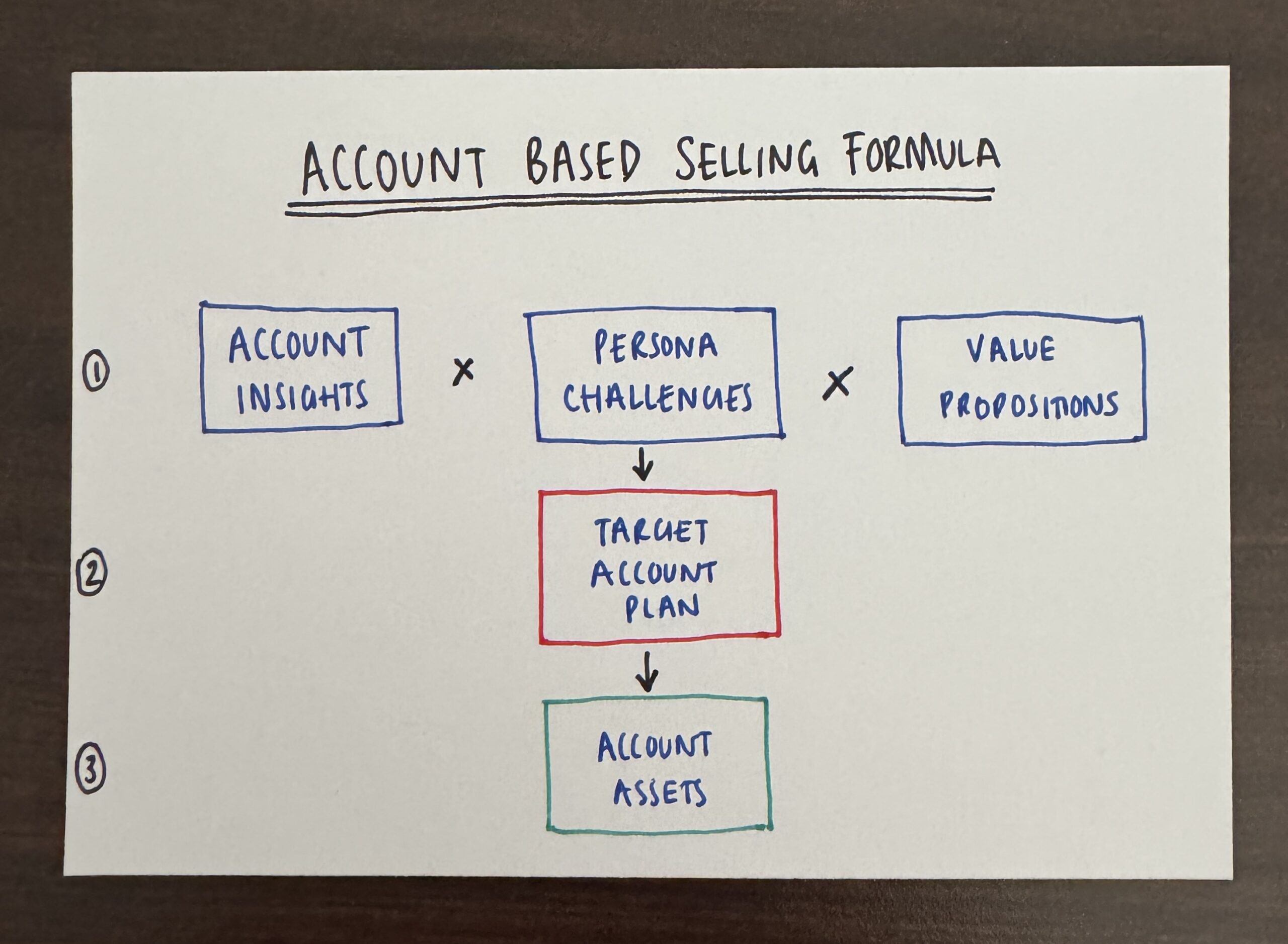
Account Insights × Persona Challenges × Value Proposition
This formula goes beyond superficial personalisation. It ensures that every touchpoint-email, call, LinkedIn message, or meeting-is rooted in context that matters.
Let’s unpack each element.
1. Account Insights
Account insights are the foundation of ABS. They go deeper than surface-level facts like “I saw you raised funding.”
True insights reveal the conditions shaping an account’s priorities.
Four types of insights matter most:
- Internal Developments
Leadership changes, hiring trends, product launches, geographic expansions, or restructures. These shape how a company allocates budget and attention. - Go-to-Market Challenges
Friction in their sales process, product adoption issues, or market-entry struggles. For example, a cybersecurity firm entering the European market may face regulatory hurdles that slow down its pipeline. - Client Risks
The challenges their own customers face, which can cascade into their buying behaviour. For instance, a FinTech vendor whose clients are under pressure to tighten compliance may urgently seek new risk management tools. - External Factors
Market trends, regulations, or economic shifts that introduce urgency or risk. A new compliance standard in HR technology, or a surge in cyber threats in financial services, can create powerful buying triggers.
The specific insights you prioritise depend on the solution you’re selling. A payroll provider will track different signals than a cybersecurity platform.
But the principle is the same: without meaningful insights, your ABS efforts collapse into generic personalisation.
2. Persona Challenges
Once you understand what’s happening inside the account, the next step is to map how those developments affect individual stakeholders.
Different personas experience challenges differently:
- A CFO worries about cost containment, ROI, and financial risk.
- A CISO focuses on threat visibility, compliance gaps, and integration complexity.
- A Head of HR might be concerned with secure onboarding, employee compliance, and productivity.
ABS demands connecting account-level insights with persona-specific challenges. It’s not enough to know that a company is expanding globally-you need to articulate what that means for the Head of Compliance versus the CIO versus the HR Director.
This is where most teams fall short. They stop at the account level. But ABS only works if you translate account dynamics into human problems.
3. Value Proposition
The final step is to frame your value proposition in context. This isn’t your generic elevator pitch. It’s a tailored narrative that says:
- “We understand what’s happening in your business.”
- “We know what you, specifically, are struggling with.”
- “Here’s exactly how we help you overcome it.”
This bridge-between insights and challenges-is where your message becomes credible.
Without it, you risk sounding like every other vendor.
Creating Targeted Account Plans
With your formula in place, the next step is execution: building targeted account plans.
A targeted account plan is a structured approach to engaging each high-value account. It involves:
- Mapping out the decision-making process inside the organisation.
- Identifying key stakeholders and their roles in the buying journey
- Defining the insights, challenges, and value propositions for each persona.
- Outlining the sequence of interactions-emails, meetings, content-that will build engagement and trust.
Account plans are living documents. They evolve as you learn more about the account and as new signals emerge.
The key is that they are unique to each organisation, not cookie-cutter templates.
The Role of Account Assets
Every account plan should be built around an Account Asset.
An account asset is customised content designed for that account. Unlike generic case studies or product sheets, account assets are deeply contextual.
They reflect both the account insights you’ve uncovered and the persona challenges you’ve mapped.
Examples include:
- A tailored ROI calculator showing financial benefits based on their data.
- A compliance roadmap addressing specific regulatory pressures.
- A playbook demonstrating how your solution supports their industry’s workflows.

Visually, the page was personalized with the account’s logo and name. But that wasn’t the exciting bit. Drawing on data from competitive intelligence platform Apptopia, we benchmarked the account’s mobile app performance against competitors across three key predictors of app store success. For some, the benchmark results were validating; for most, they were a wake-up call – Bitrise Case Study from MarketBridge.
Account assets are not solely a marketing function. Sales and marketing must collaborate.
Sales provides real-time intelligence from conversations. Marketing helps create scalable templates and formats.
Together, they ensure every stakeholder interaction is backed by meaningful, relevant content.
My opinion: Many guides from big sales vendors treat ABS as message personalisation-“mention the prospect’s role or company in your outreach.”
That’s table stakes in 2025.
Real ABS is about building account assets that bring the formula to life. Assets that prove you understand the account, empathise with the persona, and can deliver specific value.
Channels in Account-Based Selling
Account-Based Selling isn’t just about what you say- it’s also about where and how you say it.
Because ABS is designed for multi-stakeholder, high-value deals, it requires a multi-channel approach. Each channel plays a different role in building awareness, engagement, and trust.
Here are the key channels most ABS teams use, with real-world examples of how they’re applied:
- Email
Still the backbone of outbound, email in ABS must go far beyond templates. Messages are insight-driven and tailored to both the account context and persona challenges.- Example: Salesforce used hyper-personalised emails to Fortune 500 companies, referencing account-specific challenges and tailoring CTAs to each buying role.
- Phone
Direct conversations build credibility quickly. Calls allow sellers to explore insights, validate assumptions, and uncover hidden challenges that can’t be gleaned from research alone.- Example: Snowflake paired targeted call campaigns with content assets, ensuring each live conversation reflected prior digital interactions.
- LinkedIn and Social Selling
Buyers in HR tech, FinTech, compliance, and cybersecurity are active on LinkedIn. Sharing relevant content, engaging with posts, and sending personalised messages reinforces ABS credibility.- Example: LinkedIn itself ran ABS campaigns using personalised InMail combined with sponsored content, targeting buying committees at key accounts.
- Direct Mail and Gifting
Thoughtful, personalised packages can capture attention when timed with a specific account insight. These should support your overall strategy, not replace it.- Example: GumGum sent executives customised comic books featuring the target company’s story, generating viral attention and meetings with senior leaders.
- Content and Account Assets
Beyond generic marketing collateral, ABS thrives on customised assets: account-specific reports, industry benchmark guides, tailored webinars, or workshops.- Example: Thomson Reuters created account-specific microsites with curated content for different stakeholders in large law firms, aligning messaging with role-specific challenges.
- Events and Roundtables
ABS sellers often engage decision-makers through intimate events, roundtables, or targeted conference strategies. These settings create trust-building opportunities that go deeper than digital outreach.- Example: LiveRamp hosted exclusive dinners for senior executives at target accounts, creating peer-to-peer learning environments that built credibility and influence.
- Advertising and Retargeting
Account-based advertising platforms ensure your brand and messaging remain visible to the accounts you care about most, reinforcing outreach through other channels.- Example: Demandbase and Terminus both showcase how tailored display ads and retargeting can ensure consistent brand exposure across the buying committee, keeping messaging front of mind.
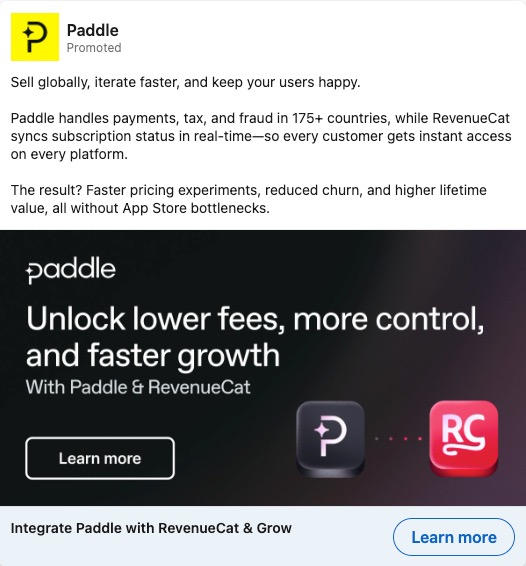
The principle: ABS isn’t about choosing one channel. It’s about orchestrating multiple touchpoints across channels, ensuring that every stakeholder sees a consistent, relevant narrative.
Benefits of Account-Based Selling
When executed correctly, Account-Based Selling delivers far more than incremental improvements. It’s a fundamental shift in how you approach your highest-value opportunities.
Instead of spreading your energy thin across a wide market, ABS channels your resources into the accounts that truly matter.
The benefits go beyond engagement rates…they extend into stronger stakeholder relationships, faster deal progression, and more efficient use of your team’s time and budget.
Ultimately, ABS creates a sales engine built not on volume, but on precision, context, and trust.
- Higher Engagement
Buyers are overwhelmed with irrelevant outreach. ABS breaks through the noise because your message reflects the account’s reality. - Multi-Stakeholder Alignment
Complex deals rarely hinge on a single decision-maker. ABS ensures you’re building credibility with the entire buying committee. - Faster Sales Cycles
By anticipating objections and addressing them with account assets, you reduce back-and-forth and build trust earlier. - Stronger Differentiation
In crowded markets, ABS gives you a competitive edge by making your outreach more relevant and your positioning more compelling. - Better ROI
Though ABS is resource-intensive, it typically delivers higher win rates and deal sizes, improving overall efficiency of spend.
Challenges of Account-Based Selling
Despite its advantages, ABS is not a silver bullet. It comes with its own set of hurdles that organisations must navigate. Unlike volume-based outbound, ABS demands patience, discipline, and cross-functional alignment.
The upfront investment of time and resources can feel heavy, and success is not immediate. Teams that treat ABS as “just more personalised outreach” risk missing the depth required for it to work.
To succeed, you need the right mindset, processes, and commitment to collaboration across sales and marketing.
Understanding these challenges upfront ensures you go in with clear eyes (and set realistic expectations for adoption).
- Resource Intensity
ABS demands more research, coordination, and tailored content. - Shallow Insights
Mentioning that a company raised funding isn’t enough. Insights must be tied to persona challenges. - Sales/Marketing Misalignment
If sales and marketing operate in silos, account assets won’t land. - Scaling ABS
Scaling requires careful segmentation and technology support without losing relevance. - Cultural Resistance
Teams used to volume-based outbound may resist the slower, high-touch approach.
Tools to Power Your Account-Based Selling
Account-Based Selling requires both strategy and execution.
While the framework: Account Insights × Persona Challenges × Value Proposition provides the blueprint, the right tools can help teams gather insights, create assets, and execute campaigns at scale without losing relevance.
Here are five tools that can elevate your ABS efforts:
Userled – Hyper-Personalised Ads and Microsites
Userled enables teams to create highly personalised experiences for target accounts. Whether it’s dynamic microsites tailored to an industry, persona, or deal stage, or custom event landing pages for account stakeholders, Userled makes it possible to scale relevance without diluting quality.
How it supports ABS:
- Builds microsites that showcase messaging aligned to account insights and persona challenges.
- Powers custom event invites that tie directly into account plans.
- Ensures every stakeholder touchpoint feels like it was made specifically for them.
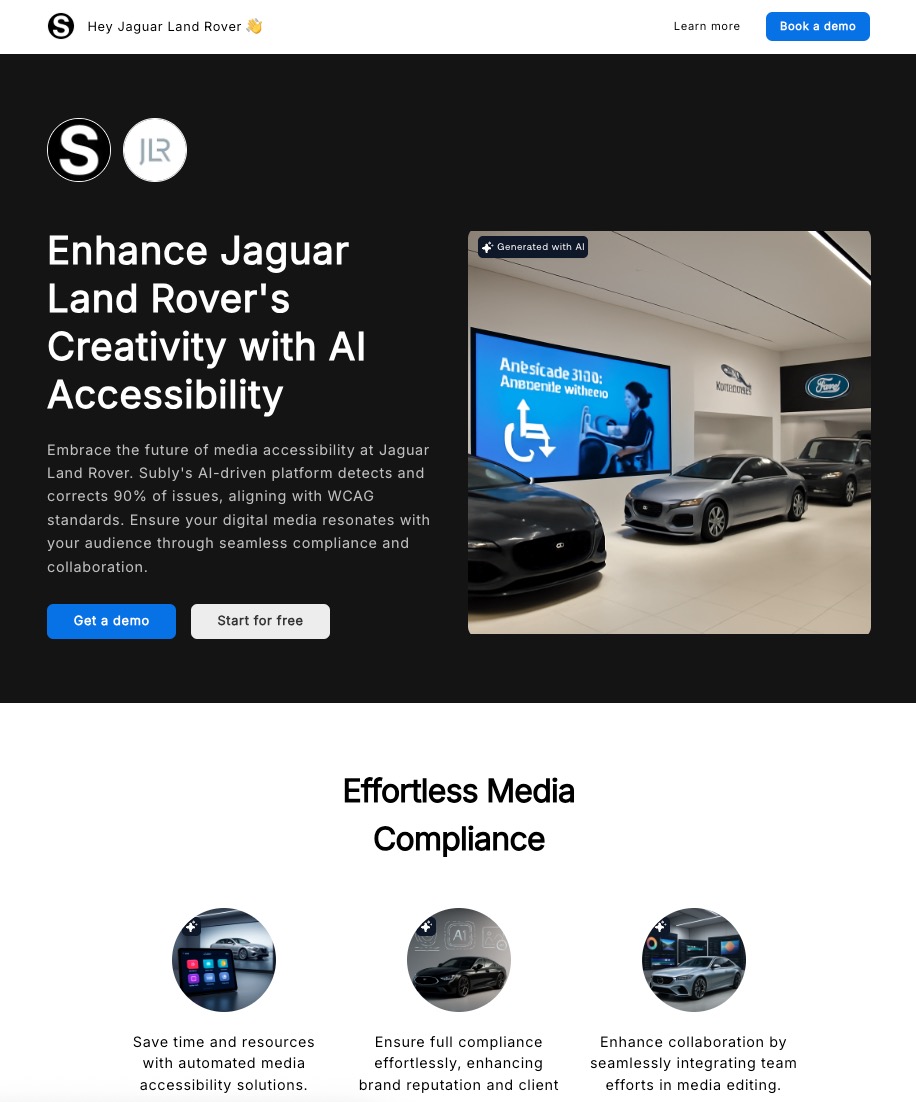

Influ2 – Personalised Advertising
Influ2 focuses on hyper-targeted advertising down to the individual level. Instead of broad programmatic ads, you can deliver personalised creative to decision-makers within specific accounts.
How it supports ABS:
- Reinforces messaging from other channels (email, LinkedIn, events).
- Keeps your brand visible to buying committees throughout the sales cycle.
- Ensures ads feel relevant because they reference industry, role, or even deal stage.
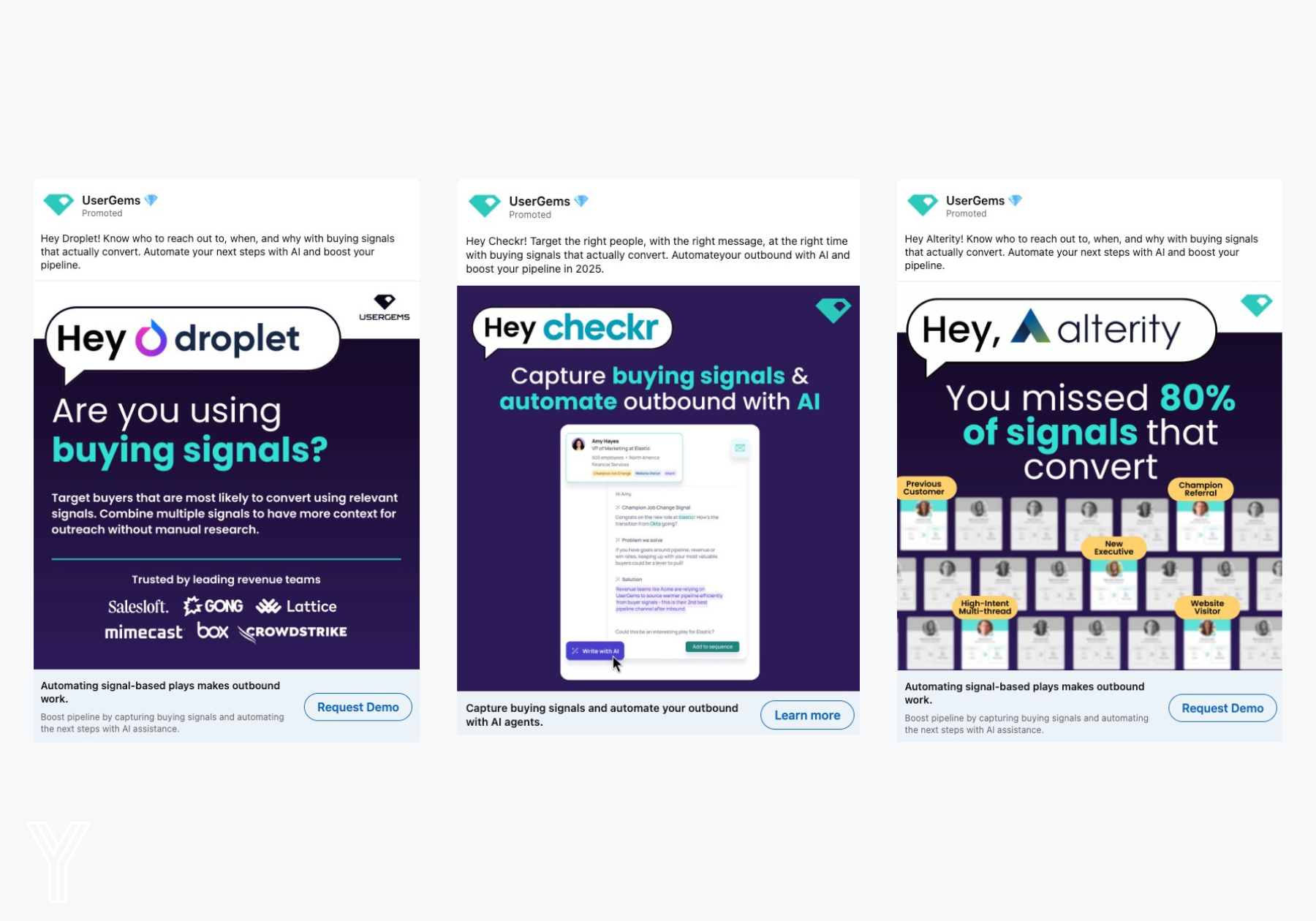
RevvedUp – Account Intelligence, Content, and Campaign Execution
RevvedUp provides a comprehensive suite for ABS:
- Account Intelligence: Build detailed account and stakeholder plans automatically, pulling from multiple signals to summarise what matters most.
- Compelling Content: Use that research to create messaging that educates and resonates with target accounts.
- Campaign Execution: Deliver multi-channel engagement across email, LinkedIn, web, and direct mail-all from one platform.
How it supports ABS:
- Automates the heavy lifting of account research.
- Aligns content creation with the ABS formula by linking insights, persona challenges, and value.
- Ensures campaigns reach stakeholders on the right channels, at the right time.
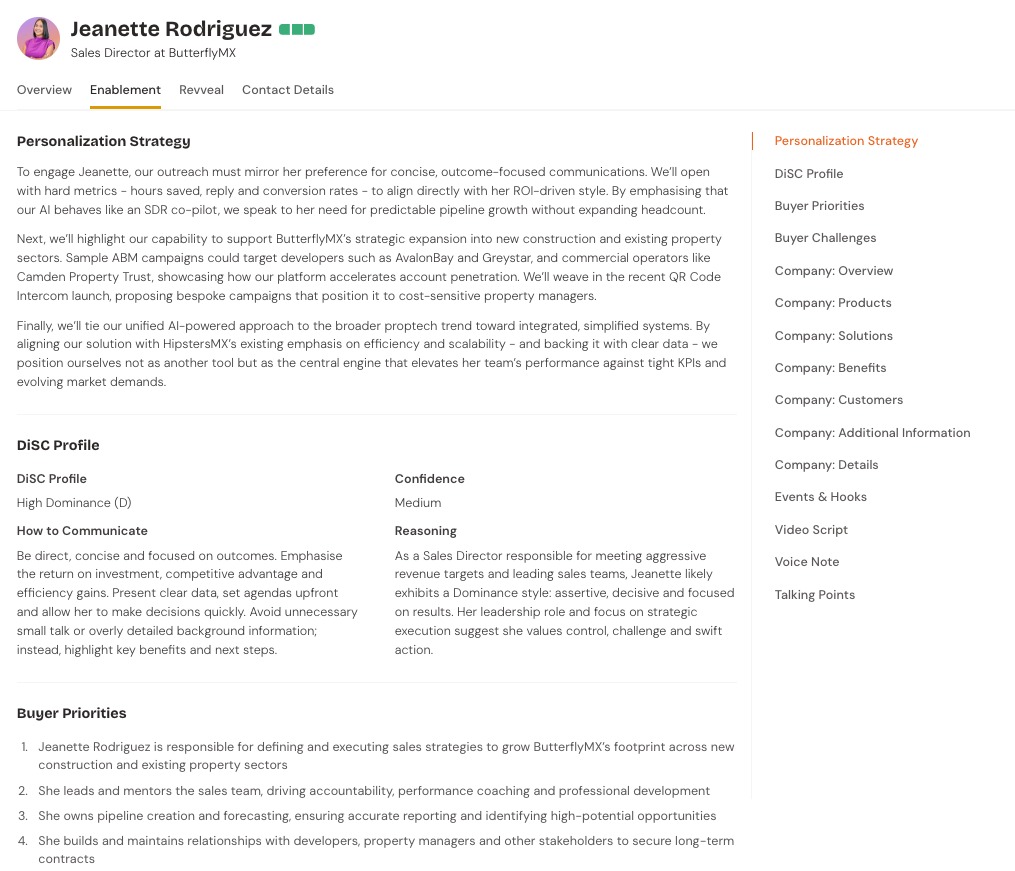
Twain – Research-Driven Sequences
Twain uses deep research to generate customised outreach sequences for each lead or account. Instead of generic sequences, Twain builds context-rich messages that connect directly to account signals.
How it supports ABS:
- Embeds real account insights into every sequence.
- Ensures outreach reflects both persona challenges and value proposition.
- Helps sales reps execute the ABS formula consistently, without spending hours on manual research.
Trumpet – Account-Based Sales Rooms
Trumpet allows sellers to create personalised digital “sales rooms” for each account.
These rooms act as collaborative hubs where stakeholders can access customised content, track progress, and engage directly with your team.
How it supports ABS:
- Creates a centralised space for account assets, ensuring stakeholders have a single point of reference.
- Builds credibility by offering a curated, professional buying experience tailored to the account.
- Encourages collaboration across the buying committee, making it easier to align multiple stakeholders during long deal cycles.
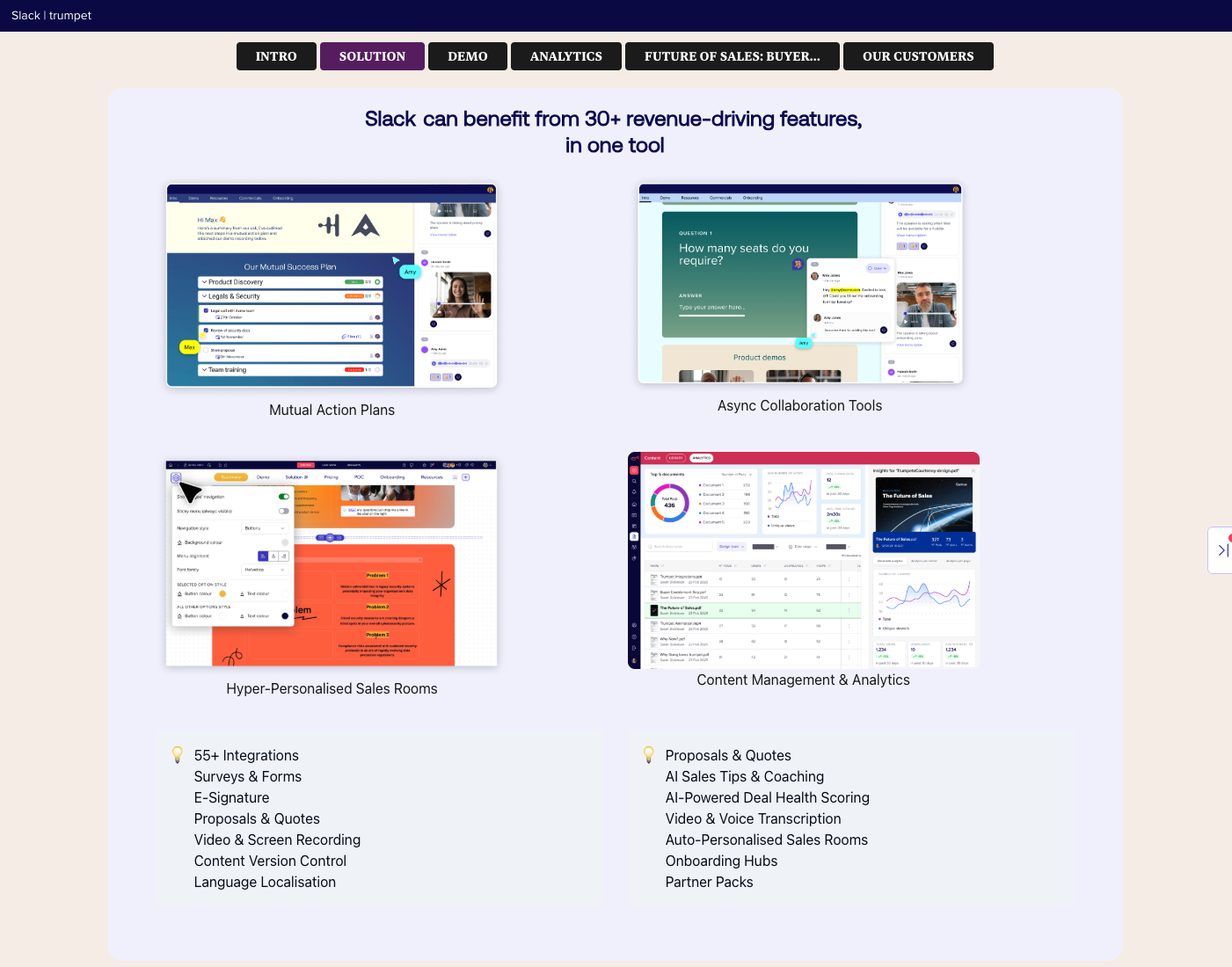
These tools don’t replace the strategic work of ABS, they amplify it.
They help you operationalise insights, scale personalisation without losing relevance, and orchestrate campaigns across multiple channels.
The result is an ABS programme that’s both efficient and effective, rooted in strategy but supported by execution.
Questions to Consider
Before committing to ABS, ask yourself:
- TAM & ACV Fit: Is our market narrow enough and deal size high enough?
- Sales Cycle Complexity: Do our deals involve multiple stakeholders and long cycles?
- Insight Gathering: Can we consistently access and translate meaningful insights?
- Sales/Marketing Alignment: Do we collaborate effectively on account plans and assets?
- Scalability: How will we balance depth with reach?
Conclusion
Account-Based Selling is not just another buzzword. It’s a disciplined approach designed for companies with small TAMs, high ACVs, and complex deal cycles.
It’s about focusing energy on the accounts that matter most, and engaging them with precision.
At its core lies a simple but powerful formula:
Account Insights × Persona Challenges × Value Proposition
When you pair this formula with targeted account plans, meaningful account assets, and multi-channel orchestration, you move beyond message personalisation. You build relationships rooted in relevance and trust.
You differentiate in markets where generic outreach no longer cuts through.
The future of pipeline growth belongs to teams who sell smarter, not louder.
And Account-Based Selling-done right-is how they’ll do it.


